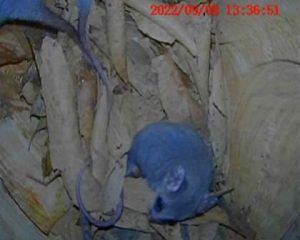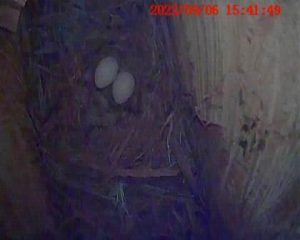
Parks Victoria manage Cabbage Tree Creek Conservation Reserve in East Gippsland. This area was affected during the summer bushfires in 2019/20 and much of the original habitat structure was heavily altered. Parks Victoria engaged Treetec to install artificial nest hollows in standing trees to increase the availability of hollows for animals impacted during the fires.
Initially Treetec ecologists identified key habitat trees that could be used to develop the artificial hollows for the local bird and mammal species that require hollows for breeding. During 2020-2021 Treetec arborists climbed the targeted trees and using chainsaws introduced nest cavities into the main trunk and then inserted wooden face plates with small to medium sized entry holes. The hollows are installed at a range of heights and with varying door sizes to ensure that a range of local forest species could find the perfect nesting site.

The installed artificial hollows have now had sufficient time for animal species to locate and potentially inhabit the hollows. During September 2022 Treetec and Parks Victoria took a group of six Orbost Secondary College VCAL students into the forest to monitor the artificial hollows to observe if they had been successfully occupied.
As the hollows are at a reasonable height to suit arboreal or tree dwelling species students used long telescopic poles with cameras mounted to the ends that could poke inside the entry hole and relay images to the users below. Some of the hollows monitored by students detected leaf nests constructed by mammals, bird nests, and other natural materials that had been taken into the hollows by wildlife. It is hoped that in the future all the hollows will become occupied.

The success of local species inhabiting the artificial hollows highlights the importance of these critical habitat features that can be lost due to events such as bushfires. The project is ongoing and it is hoped that over future years Orbost Secondary College students can continue to assist Parks Victoria and Treetec with monitoring and gather longer term data on the uptake of artificial hollows by our local wildlife.
